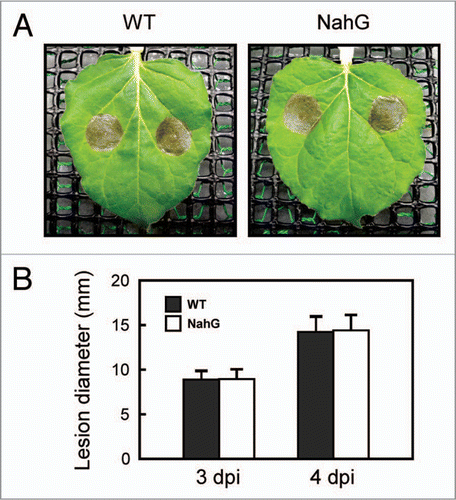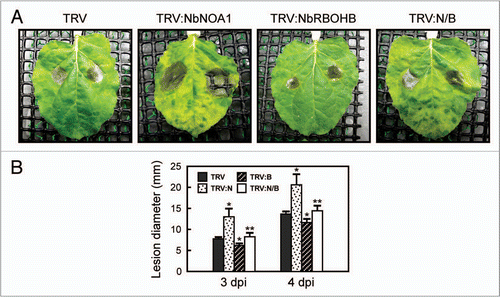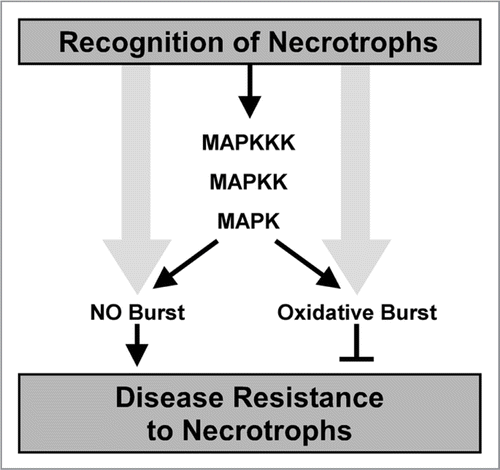Figures & data
Figure 1 Effects of NahG transgene on susceptibility to B. cinerea. NahG and non-NahG (WT) leaves were inoculated with B. cinerea conidial suspension (1 × 105 conidia/ml). (A) Inoculated leaves were photographed at 4 days postinoculation (dpi). (B) Average diameter of lesions formed on the leaves at 3 and 4 dpi. Data are means ± SD from fourteen experiments.

Figure 2 Effects of silencing NbNOA1 (N), NbRBOHB (B) or NbNOA1/NbRBOHB (N/B) in NahG plants on susceptibility to B. cinerea. Silenced NahG leaves were inoculated with B. cinerea conidial suspension (1 × 105 conidia/ml). (A) Inoculated leaves were photographed at 4 dpi. (B) Average diameter of lesions formed on the leaves at 3 and 4 dpi. Data are means ± SD from four experiments. Data were subjected to Student's t-test. *p < 0.05 versus silencing-control plants (TRV). **p < 0.05 versus NbRBOHB-silenced plants.

Figure 3 Model showing role of NO and oxidative bursts in disease resistance to necrotrophic pathogens. After recognition of necrotrophs, plants immediately provoke activation of MAPK which could regulate production of both NO and ROS,Citation2 and then NO and oxidative bursts. NO burst plays an important role in disease resistance to necrotrophic pathogens, whereas oxidative burst has a negative role in resistance or has a positive role in expansion of disease lesions by necrotrophs.
